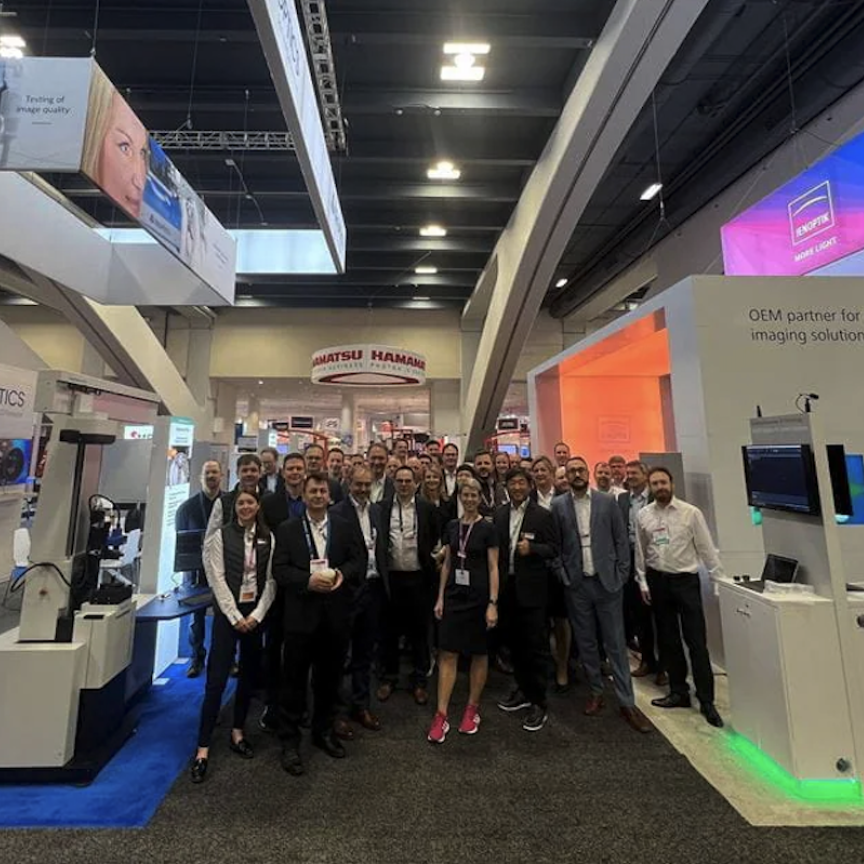By Gil Noy, Founder & CEO, 3DOptix
Optic design models are complex pieces of engineering that need to be precise and accurate. Not achieving this goal can create multiple technical issues that can impact businesses negatively on multiple levels.
Here are seven key components of optic design models and how optic design simulation software can help optimise these parameters significantly.
1. Lenses and imaging
Lenses are typically made of glass and have spherical curvature that allows them to focus light, form images, and collimate beams. The power of a lens is described through the focal length – the distance from the lens to the focal point. By changing the radius or focal point, you get different types of lenses: plano-convex, plano-concave, convex-convex, concave-concave, and concave-convex.
While positive lenses focus light, negative lenses diverge it. Some lenses like concave-convex can do both depending on the position of the facets.
Lenses can also be used to form images. A positive lens can generate a real image whenever an object is located further than the lens’s focal length. Depending on this distance, the image will be either compressed or magnified but always inverted. If we change the object placement between the focal length and the lens, we will produce an imaginary image. These types of images are magnified but not inverted.
2. Reflection and transmission
The law of refraction, also known as Snell’s law, defines the relation between the angle of incident of light to the angle of refraction. When travelling via transparent materials with different material properties, light interacts with the elements and is often slowed down. Each material’s “index of refraction” has to be taken into account. For example, for a vacuum this is 1, while for water the number goes up to 1.3.
Things get complicated with unknown materials. Here, your best bet is dispatching a laser beam through the specific material, after which it is rotated and the displacement is measured as a function of the exact rotating angle.
3. Prisms
You can’t possibly create optic design models without prisms. These optical mechanisms, assembled with transparent elements like glass, diffract light into spectral elements just like gratings can also do today. Prisms have many uses in the grand scheme of things. Some of them include light deflection, input beam diffraction, light direction, and creating all kinds of polarisation states.
As you can imagine, there are many types of prisms in use today – dispersive prisms, equilateral prisms, reflection prisms, pentagon prisms, Axicon prisms, polarisation prisms, rhomboid prisms, and Perlin Broca prisms, to name a few.
4. Spectrometers
No optic design model is complete without spectral measurements. Spectrometers help measure the spectrum of input beams accurately by separating them into individual spectral components and measuring their intensity with a wide array of detectors, typically prisms or gratings that give each spectral component a different angle, which are eventually mapped into different locations on the detector array.
Keep in mind that the spectral range of the specific spectrometer defines the bandwidth that it can measure. Also, the spectrometer resolution defines the minimal spectral feature that it can resolve.
Just like prisms, you have a big choice of spectrometers to choose from, based on your budget constraints, technical requirements, and use cases. There are diffraction grating-based spectrometers, prism-based spectrometers, Fabry-Pérot spectrometers, and temporal spectrometers. You also have monochromators, which are similar contraptions to filter specific spectral components out of inputs.
5. Aberrations
If you don’t have a 20/20 vision, you’re probably familiar with aberrations. The same applies to imaging systems, with most of them suffering from some kind of image quality degradation. The three common types of aberrations are spherical, coma, and chromatic. Needless to say, these aberrations are magnified (literally) when they appear in devices like microscopes and telescopes.
The best way to fight aberrations is to use perfect lenses, which can be very expensive. But there are also new countermeasures such as combining two lenses, replacing lenses with mirrors, implementing the Schmidt camera and more.
6. Beam expanders
Lenses can help improve clarity by increasing the diameter of collimated laser beams, while also correlating divergence. This can be achieved by using beam expanders, typically optimal telescopes with two lenses, where both input and output beams are collimated. It’s also possible to add a spatial filter to produce clean laser beams. Keplerian and Galilean telescopes are most commonly used today.
Beam expanders are truly versatile. They can help keep the beam collimated when the path is long. In other cases like high-power laser systems, they can help increase the beam area without impacting the overall laser energy or causing damage to sensitive internal components. Beam expanders also play a key role in laser ranging systems, where laser divergence needs to be minimised.
7. Off-axis parabolic mirrors
Off-axis parabolic mirrors focus collimated beams into focal points, irrespective of the wavelengths of the incident lights. Doing this allows achromatic focusing. In addition to this key action, the point-source light that is located at the parabolic mirror focus creates a collimated beam with plane wavefronts. On-Axis parabolic mirrors are not of much use here as they overlap with incoming beam parts.
Parameters that control off-axis parabolic mirror functionality include:
- Parent focal length (PFL), the focus-length of the equivalent On-Axis parabolic mirror (the focal length from the centre of the complete parabola)
- Effective focal length (EFL) and the reflective focal length (RFL) – the measured focal length from the surface of the mirror to the focal length
- The focusing angle between the FL vector and the EFL vector
Optic simulation software: A true gamechanger
Optic design models are extremely complex and have a plethora of parameters that can impact performance. This is why optic simulation software is taking centrestage. This kind of software allows optical designers and engineers to test optical systems and evaluate their performance. The findings can be used to improve productivity and boost accuracy.
Optic simulation software solutions such as 3DOptix, Code V, LightTools, Zemax, and Comsol are helping adopt a proactive approach where companies can save precious time and decrease investments in optical apparatus developments. The analysis provided by these systems helps optical design manufacturers gain actionable insights and optimise their products even before moving to the implementation phase.
3DOptix offers a cloud-based that introduces innovative high-end design methods and features a modern, user-friendly interface. In addition to offering a free version, the firm has fostered a thriving community that includes optical designers, engineers, academic researchers, and optical manufacturers.


